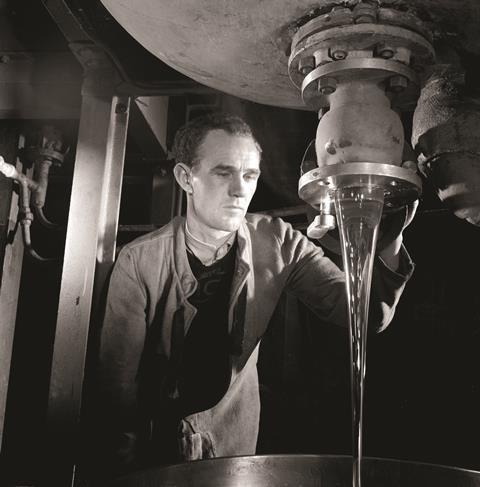How detonators transformed modern life

One of the great chemical inventions is the detonator – a small explosive device which sets off a big one. The idea seems to have been started about 1800, when the Scottish clergyman Alexander Forsyth devised his ‘percussion cap’ for hand guns. Previously, most hand guns had been ‘flintlocks’: when you pulled the trigger, a piece of steel struck a flint and the resultant spark set off a pan of gunpowder. From here, a tube carrying the powder conveyed the flame to the firing charge. Quite often this system went wrong; if the ignition failed to follow the gunpowder down the tube you merely got ‘a flash in the pan’. Even so, flintlock muskets such as the famous ‘Brown Bess’ won many battles, and were a staple of every major army fighting at the time in the Napoleonic Wars.
Farewell to flint
Forsyth was dissatisfied by the time between pulling the trigger of his fowling piece (a gun designed to be fired from the shoulder hunt fowl, roughly equivalent to a modern shotgun) and the time it took to fire. Birds would notice the puff from the flint spark and escape by the time the shot was made. In 1807, Forsyth made use of the newly discovered fulminate of mercury (Hg(CNO)2 , which is highly sensitive to friction, to create a gun that fired using concussion rather than flint spark.
The invention set off his gun by direct impact as soon as he pulled the trigger – a huge advantage for any army that adopted the system. Napoleon Bonaparte offered him thousands of pounds for the patent, which he loyally refused (I had been Napoleon, I’d have used it anyway). By 1822 the percussion cap had been patented by Joshua Shaw, and by about 1850 the military of almost all countries had almost entirely abandoned flint systems in favour of the percussion cap and its chemical successor, the detonator.
Dynamite idea
Of course, the great name associated with detonators is the Swedish chemist Alfred Nobel. First, Nobel tamed the dangerous explosive nitroglycerin by absorbing it in diatomaceous earth (a soft sedimentary rock that forms a fine powder) to make dynamite; then he invented a detonator based on mercuric fulminate to set that dynamite off. There are many unstable and easily exploded chemicals, but only a few useful detonators, even though various others have been advocated, such as a mixture of lead chlorite and sugar.
I imagine that Nobel’s laboratory must have been worryingly exciting for quite a time. I encountered some of the problems as a young lad, when I tried to detonate gunpowder with the frightfully sensitive explosive nitrogen triiodide – it just blew the gunpowder away and failed to set it off. Many chemists will have similarly made dangerously sensitive explosives such as the acetylides of copper, silver, and gold; I am pretty sure they could set off a dynamite charge, but each is far too untrustworthy to use as a detonator. To this day, Nobel’s mercuric fulminate still has only one serious rival – lead azide. Given how often the Nobel prize is mentioned, it’s worth remembering just how Nobel achieved his fame – by doing wonders for gunnery and the explosive arts.
Editor: Chemistry World is sad to report that David Jones, a long-time contributor to the magazine, has died aged 79 years. Jones studied at Imperial College London, UK, and later worked for Imperial Chemical Industries (ICI) and was widely known by his pen name Daedalus.












No comments yet